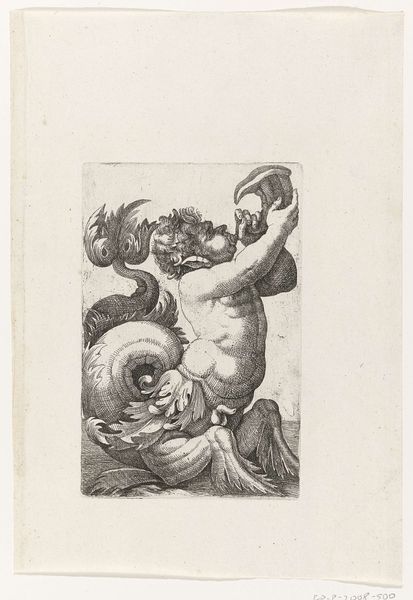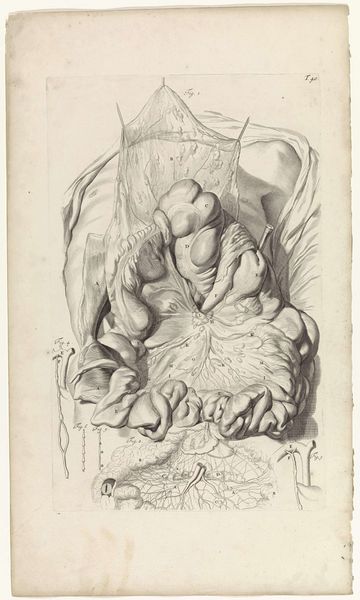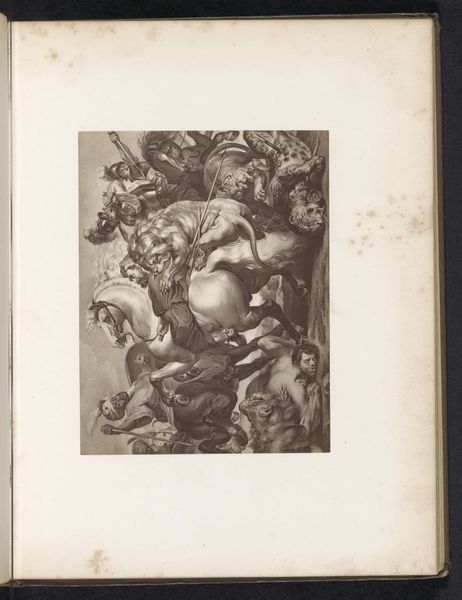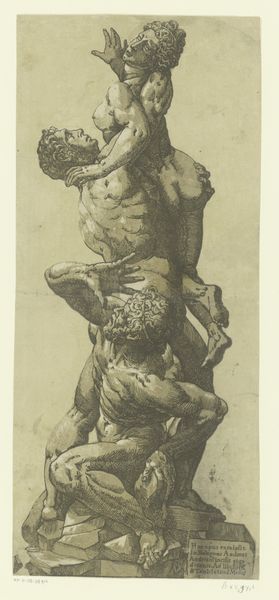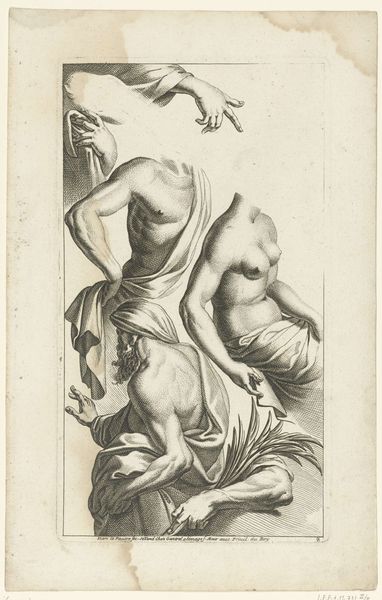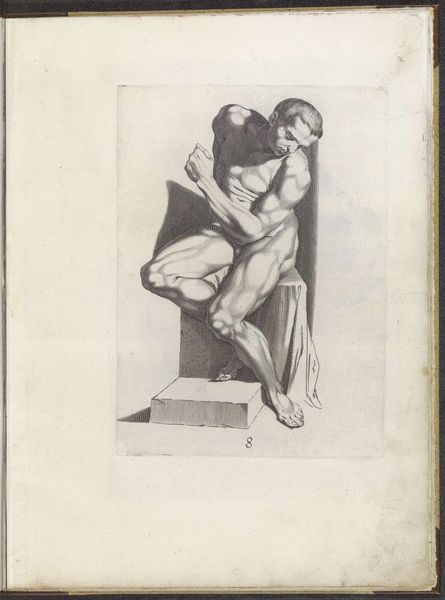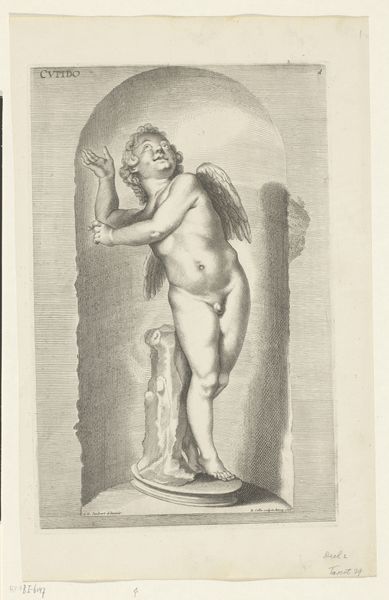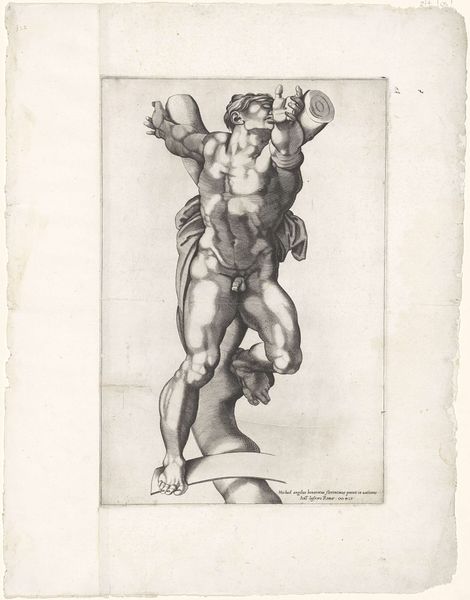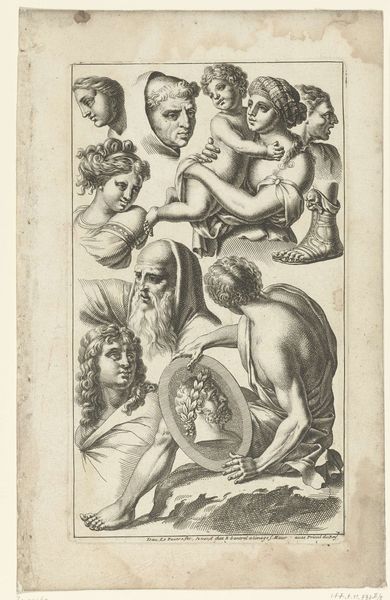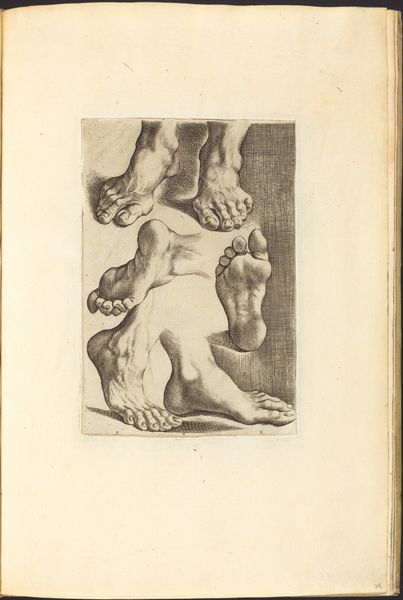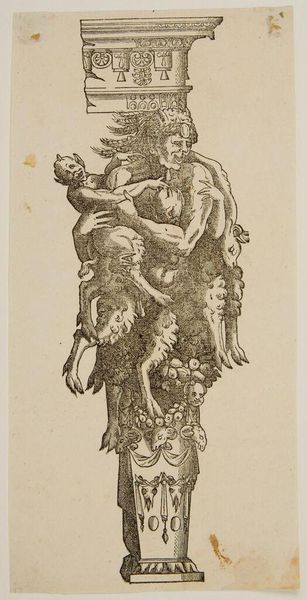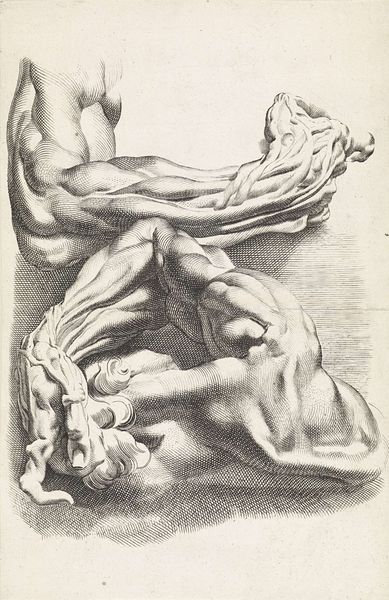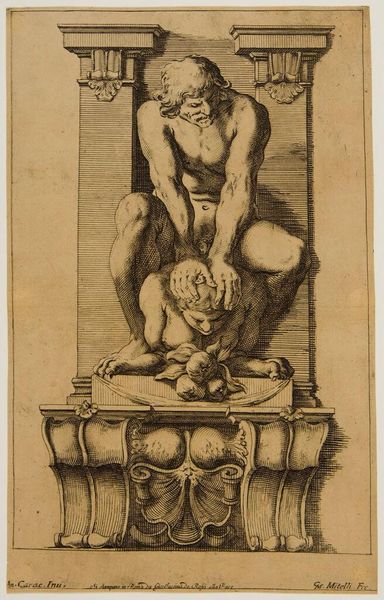
drawing, pencil
#
pencil drawn
#
drawing
#
baroque
#
pencil sketch
#
figuration
#
pencil drawing
#
pencil
#
history-painting
#
academic-art
#
realism
Dimensions: width 278 mm, height 438 mm
Copyright: Rijks Museum: Open Domain
This is Pieter van Gunst's ‘Anatomical study of a fetus’, made sometime between the late 17th and early 18th century using the technique of engraving. This wasn't just artistry; it was a meticulous scientific undertaking. Engraving involved incising lines onto a metal plate, usually copper, with a tool called a burin. The plate is then inked, and the surface wiped clean, leaving ink only in the incised lines. When paper is pressed against the plate, the image transfers. The result is a print with incredibly fine, precise lines, perfect for the detailed representation you see here. Consider the time and skill involved in creating this artwork. The engraver needed not only artistic talent but also a deep understanding of anatomy, and mastery of their tools. The texture and weight of the lines give a sense of depth and volume to the forms. By focusing on materials and process, we can appreciate not only the artwork’s visual qualities but also the knowledge, labor, and cultural context that shaped its creation.
Comments
No comments
Be the first to comment and join the conversation on the ultimate creative platform.
